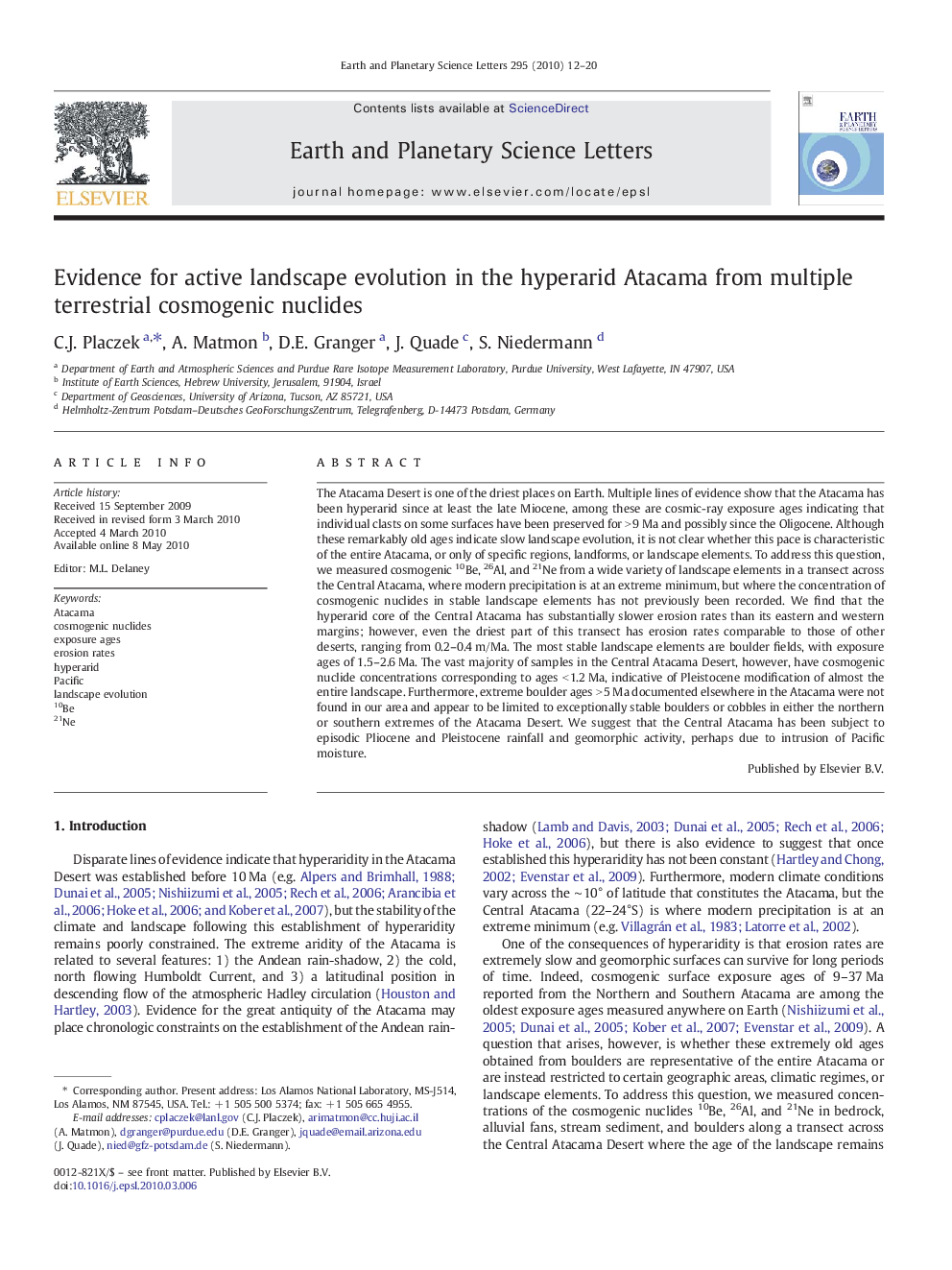| کد مقاله | کد نشریه | سال انتشار | مقاله انگلیسی | نسخه تمام متن |
|---|---|---|---|---|
| 6430911 | 1634850 | 2010 | 9 صفحه PDF | دانلود رایگان |

The Atacama Desert is one of the driest places on Earth. Multiple lines of evidence show that the Atacama has been hyperarid since at least the late Miocene, among these are cosmic-ray exposure ages indicating that individual clasts on some surfaces have been preserved for >Â 9Â Ma and possibly since the Oligocene. Although these remarkably old ages indicate slow landscape evolution, it is not clear whether this pace is characteristic of the entire Atacama, or only of specific regions, landforms, or landscape elements. To address this question, we measured cosmogenic 10Be, 26Al, and 21Ne from a wide variety of landscape elements in a transect across the Central Atacama, where modern precipitation is at an extreme minimum, but where the concentration of cosmogenic nuclides in stable landscape elements has not previously been recorded. We find that the hyperarid core of the Central Atacama has substantially slower erosion rates than its eastern and western margins; however, even the driest part of this transect has erosion rates comparable to those of other deserts, ranging from 0.2-0.4Â m/Ma. The most stable landscape elements are boulder fields, with exposure ages of 1.5-2.6Â Ma. The vast majority of samples in the Central Atacama Desert, however, have cosmogenic nuclide concentrations corresponding to ages <Â 1.2Â Ma, indicative of Pleistocene modification of almost the entire landscape. Furthermore, extreme boulder ages >Â 5Â Ma documented elsewhere in the Atacama were not found in our area and appear to be limited to exceptionally stable boulders or cobbles in either the northern or southern extremes of the Atacama Desert. We suggest that the Central Atacama has been subject to episodic Pliocene and Pleistocene rainfall and geomorphic activity, perhaps due to intrusion of Pacific moisture.
Journal: Earth and Planetary Science Letters - Volume 295, Issues 1â2, 15 June 2010, Pages 12-20